Saddle soreness, numb bits, or aching backs can ruin the joy of cycling. The good news? Discomfort isn't inevitable! Achieving a pain-free ride hinges on proper bike fit, smart positioning, and choosing the right gear. Here’s your guide to sitting comfortably:
1. Find Your Foundation: Saddle Height is Key
Heel Method: Sit on the saddle. Place your heel on the pedal at its lowest point. Your leg should be almost straight (slight bend). When pedaling with the ball of your foot, you’ll have a 25-35 degree knee bend.
Why it works: Too low strains knees; too high causes rocking hips and saddle pressure. Correct height ensures efficient power transfer and stability.
2. Dial in Fore/Aft Position (Saddle Setback):
Your knee should align vertically over the pedal spindle when the crank is horizontal (3 o'clock position). Use a plumb line or have someone check.
Why it matters: Incorrect setback overloads hands, shoulders, or perineum, causing pain.
3. Level Your Saddle (Usually!):
Start with the saddle perfectly level. Use a spirit level app on your phone. Minor adjustments (1-2 degrees nose down or up) can help, but drastic angles often create new problems.
Avoid: Tipping the nose up significantly increases perineal pressure. Tipping it down slides you forward, straining arms and shoulders.
4. Engage Your Sit Bones (Ischial Tuberosities):
Sit upright on the saddle’s widest rear section. You should feel your weight firmly on these two bony points – not on soft tissue.
Tip: Wear padded cycling shorts ("chamois") to cushion these bones. Regular underwear causes friction and chafing.
5. Maintain a Neutral Spine & Relaxed Upper Body:
Avoid rounding or over-arching your lower back. Engage your core slightly.
Keep elbows slightly bent, shoulders relaxed and down (not hunched near ears). A stiff upper body transmits shock and causes neck/shoulder pain.
6. Stand Up Regularly!
Shift your weight, pedal out of the saddle for 10-30 seconds every 10-15 minutes. This relieves pressure and boosts circulation, preventing numbness.
7. Invest in the Right Saddle:
Measure Your Sit Bones: Use cardboard or a memory foam pad to find your sit bone width. Choose a saddle at least 20mm wider than this measurement.
Shape Matters: Consider cutouts/relief channels if you experience soft tissue pressure or numbness. Test saddles if possible.
8. Consider Suspension & Dampening:
A carbon seatpost, suspension seatpost, or wider tires run at lower pressure can significantly reduce road/trail vibration transmitted to your body.
Listen to Your Body & Adjust Gradually:
Minor tweaks (1-2mm saddle height, slight tilt) make a big difference. Change one thing at a time and test ride.
Some initial discomfort adapting to a correct position is normal, but sharp pain or numbness means STOP and re-evaluate.
The Takeaway:
Comfort comes from aligning your body correctly on a bike suited to you. Prioritize saddle height, setback, and level. Support your sit bones, stay relaxed, move often, and don’t suffer silently – the right setup feels amazing! If pain persists, consult a professional bike fitter. Ride happy, ride pain-free!
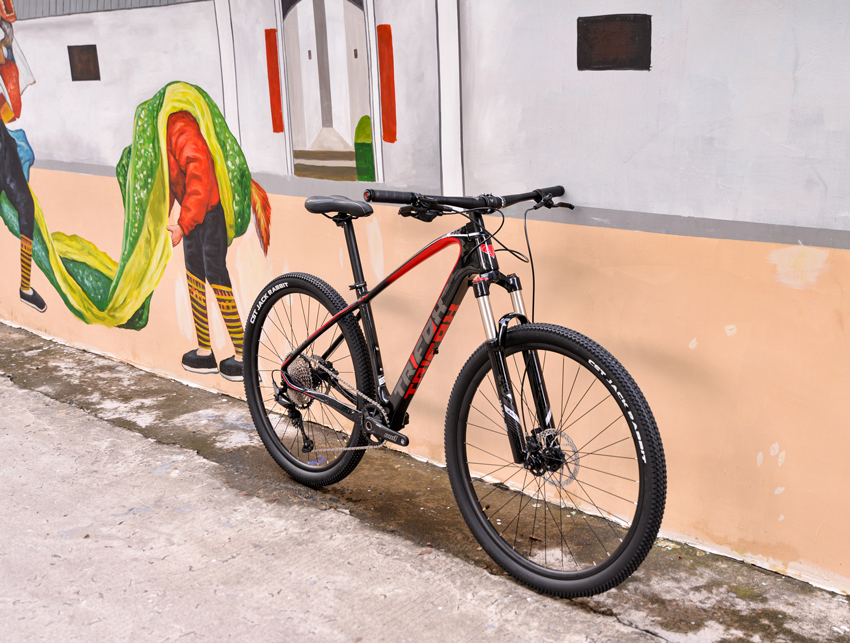

That frustrating moment: you've got a shiny new seatpost clamp, ready to eliminate seat slippage once and for all... only to find it doesn't fit your frame. Don't worry, you're not alone! Choosing the right seat clamp size is crucial, and thankfully, it boils down to one key measurement: your bike frame's seat tube outer diameter.
Why Size Matters:
Seatpost clamps work by tightening around the outside of your frame's seat tube, applying pressure to secure the seatpost inside. If the clamp is too small, it simply won't fit. If it's too large, it won't tighten evenly or effectively, potentially leading to:
- Persistent Slipping: Your seatpost gradually sinks during rides.
- Frame Damage: Uneven pressure can crush or distort thin-walled seat tubes, especially on carbon frames.
- Clamp Failure: Over-tightening a too-large clamp to compensate can strip bolts or break the band.
Finding Your Magic Number (in millimeters):
Here's how to find your frame's seat tube outer diameter:
1. The Gold Standard: Calipers: Digital or Vernier calipers give the most accurate reading. Measure the outer diameter of the seat tube near the top, where the clamp sits. Avoid measuring over decals or thick paint layers.
2. Check Existing Clamp: If your current clamp works, it likely has the size stamped or engraved on the inside of the band (e.g., "31.8", "34.9", "36.4").
3. Frame Sticker/Model Info: Some manufacturers print the seat tube diameter on a frame sticker near the bottom bracket or include it in the online specs for your bike model.
4. Manufacturer's Website: Look up your specific bike model year specs – the seat clamp size is often listed.
5. Common Sizes (But MEASURE to Confirm!):
- Road Bikes: Often 28.6mm, 31.8mm, or 34.9mm.
- Mountain Bikes: Common sizes include 30.0mm, 31.8mm, 34.9mm, 36.4mm, 38.0mm, and 39.8mm.
- Gravel Bikes: Can vary, often overlapping road and MTB sizes (e.g., 31.8mm, 34.9mm).
- Older Steel Bikes: May use sizes like 26.8mm, 27.2mm (seatpost size, clamp is larger!), 28.6mm.
Trifox Bike Alloy Seatpost Clamps: A Great Example
Trifox Bike offers lightweight and durable alloy seatpost clamps (like the one linked: https://www.trifoxbike.com/alloy-seatpost-clamp) in a wide range of precisely sized options – typically 28.6mm, 30.0mm, 31.8mm, 34.9mm, 36.4mm, 38.0mm, and 39.8mm. This variety highlights why knowing your exact measurement is essential! Don't guess; measure your frame first, then select the matching Trifox clamp size.
Installation Tip: Torque It Right!
Once you have the perfect size clamp (e.g., a 34.9mm clamp for a 34.9mm seat tube):
1. Clean the seat tube and clamp contact points.
2. Apply a small amount of carbon or aluminum assembly paste to the seatpost inside the tube (prevents slippage, crucial for carbon posts/frames).
3. Position the clamp with any logos facing forward.
4. Crucially: Tighten the bolt(s) gradually and evenly to the manufacturer's recommended torque setting (usually printed on the clamp or in your bike manual). Over-tightening can damage the frame or clamp. Use a torque wrench if possible.
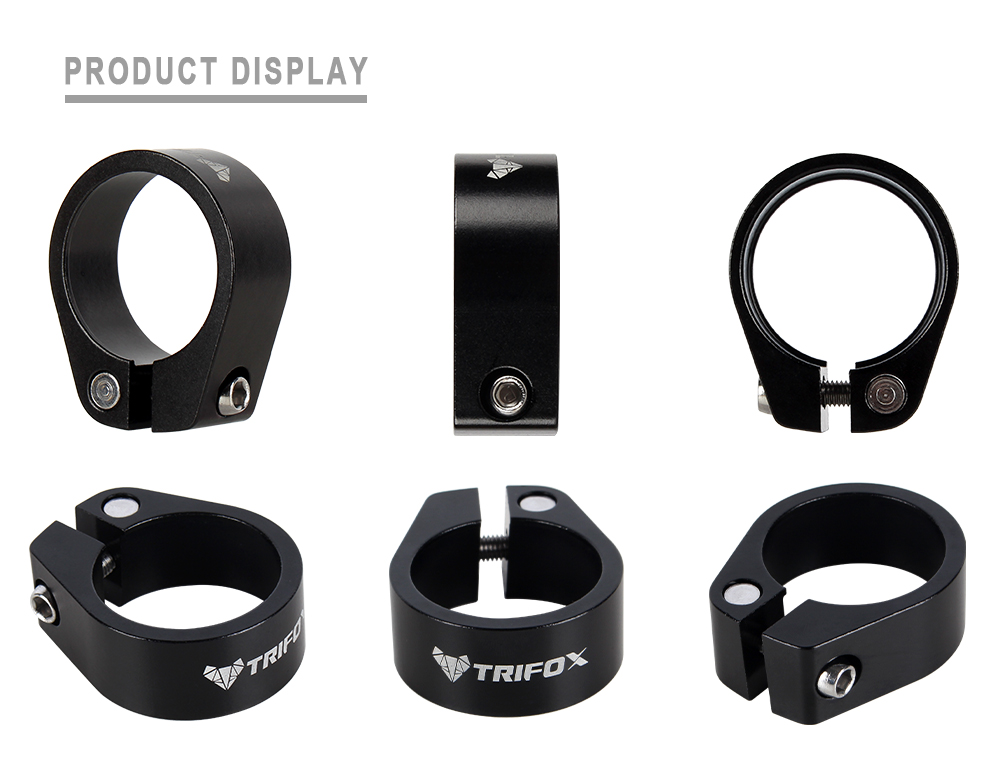
Forget "standard" sizes. Your bike's seat tube outer diameter (OD) dictates the seatpost clamp size you need. Measure accurately using calipers, check your old clamp, or consult your frame specs. Once you know your size (e.g., 31.8mm), choosing a high-quality, correctly sized clamp like those from Trifox Bike ensures a secure, reliable, and damage-free connection, letting you focus on the ride ahead!
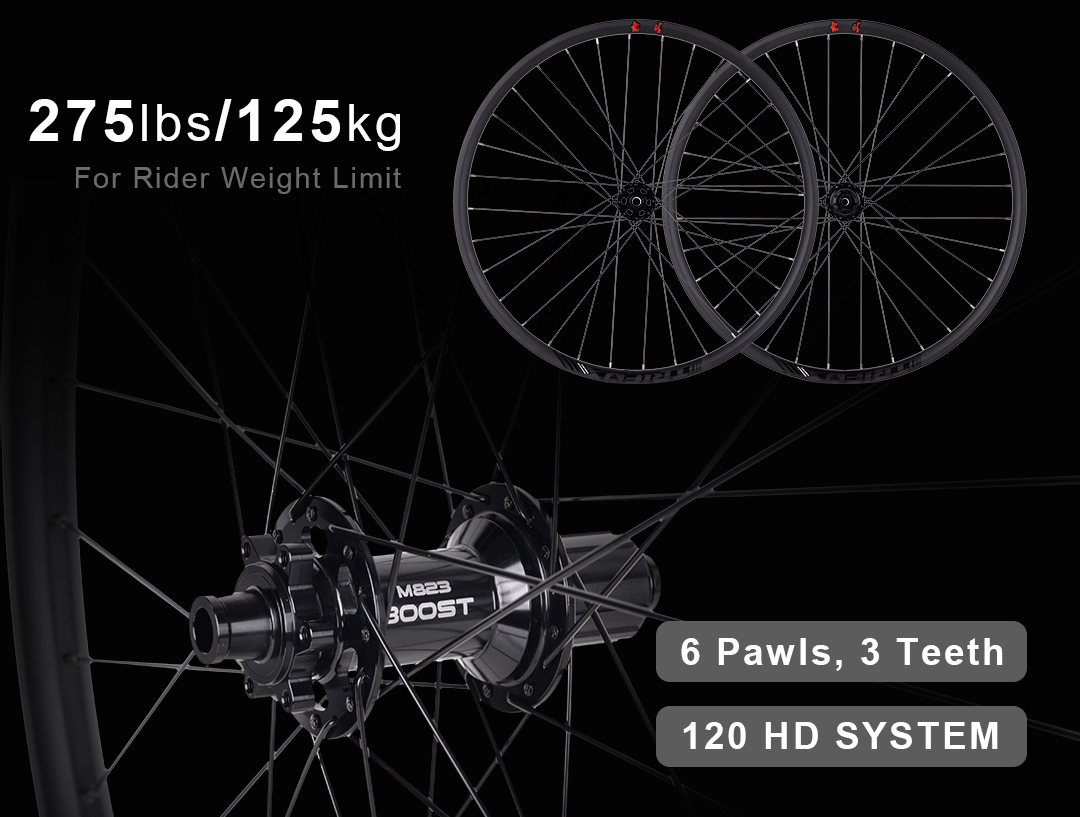
That "Boost" label on wheels and frames isn't marketing fluff – it's a significant evolution in mountain bike standards solving real problems. Here's the lowdown:
The Core Idea: Wider Hub Spacing
- Old Standard (Non-Boost): Front: 100mm width. Rear: 142mm width.
- Boost Standard: Front: 110mm width. Rear: 148mm width.
Why Bother Going Wider? Key Benefits:
1. Stiffer Wheels: The wider hub flanges (the points where spokes attach) move the spokes further apart laterally. Think of it like a wider stance. This dramatically increases wheel stiffness, especially crucial for:
Hardtails: Reducing flex under pedaling and cornering.
Modern Geometry: Supporting wider tires and longer, slacker bikes that put more stress on wheels.
Preventing Brake Rub: Stiffer wheels flex less under hard braking (disc brakes), reducing the chance of pads hitting the rotor.
2. Better Tire Clearance: The wider spacing allows frame designers to create wider rear triangles and fork crowns. This provides ample room for today's popular wider tires (2.4" to 2.8"+) without compromising chainline or risking tire rub on the frame.
3. Improved Frame Design: The extra space allows designers to:
Create shorter chainstays (improving maneuverability).
Use wider, stiffer bottom brackets (like BB92/BB121).
Improve suspension kinematics (on full-suspension bikes).
4. Better Chainline: The wider rear hub shifts the cassette slightly outboard. Combined with modern 1x drivetrains, this creates a straighter chainline across all gears, improving shifting performance and efficiency.
What Do You Need for Boost?
- Boost Frame & Fork: Your bike frame must have Boost rear spacing (148x12mm thru-axle) and your fork must have Boost front spacing (110x15mm thru-axle).
- Boost Wheels: You need wheels built with hubs specifically designed for Boost spacing. (Like the Trifox WM823 Boost wheels linked above).
- Boost Crankset: While not always mandatory, most modern Boost frames pair best with cranks designed for a wider "Boost chainline" (often 52mm vs the old 49mm).
Is Boost Backwards Compatible?
Generally, no. You can't fit a Boost wheel into a non-Boost frame/fork without adapters (which often compromise stiffness). Non-Boost wheels won't fit Boost frames/forks.
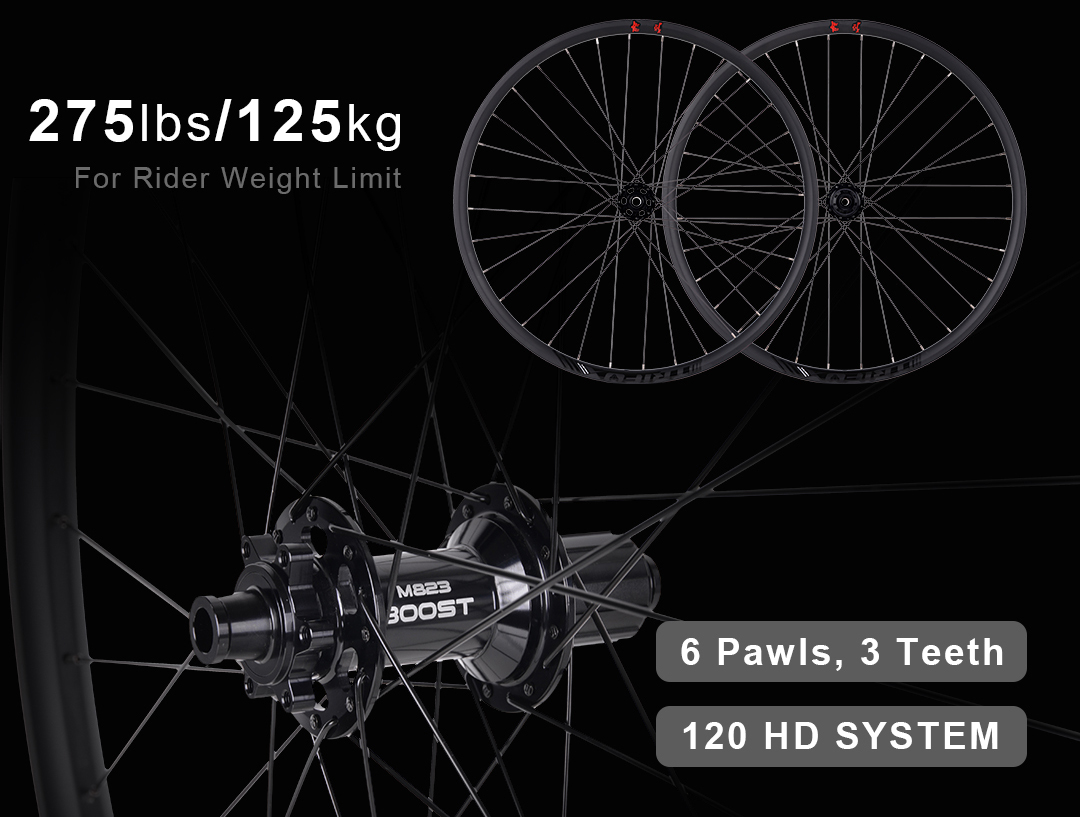
Boost isn't just "newer," it's genuinely better. It delivers tangibly stiffer, stronger wheels, enables modern frame designs and tire sizes, and improves drivetrain performance. If you're buying a new mountain bike or wheels (like the Trifox WM823 Boost), Boost is the modern standard you want. It solved real engineering limitations and is here to stay.
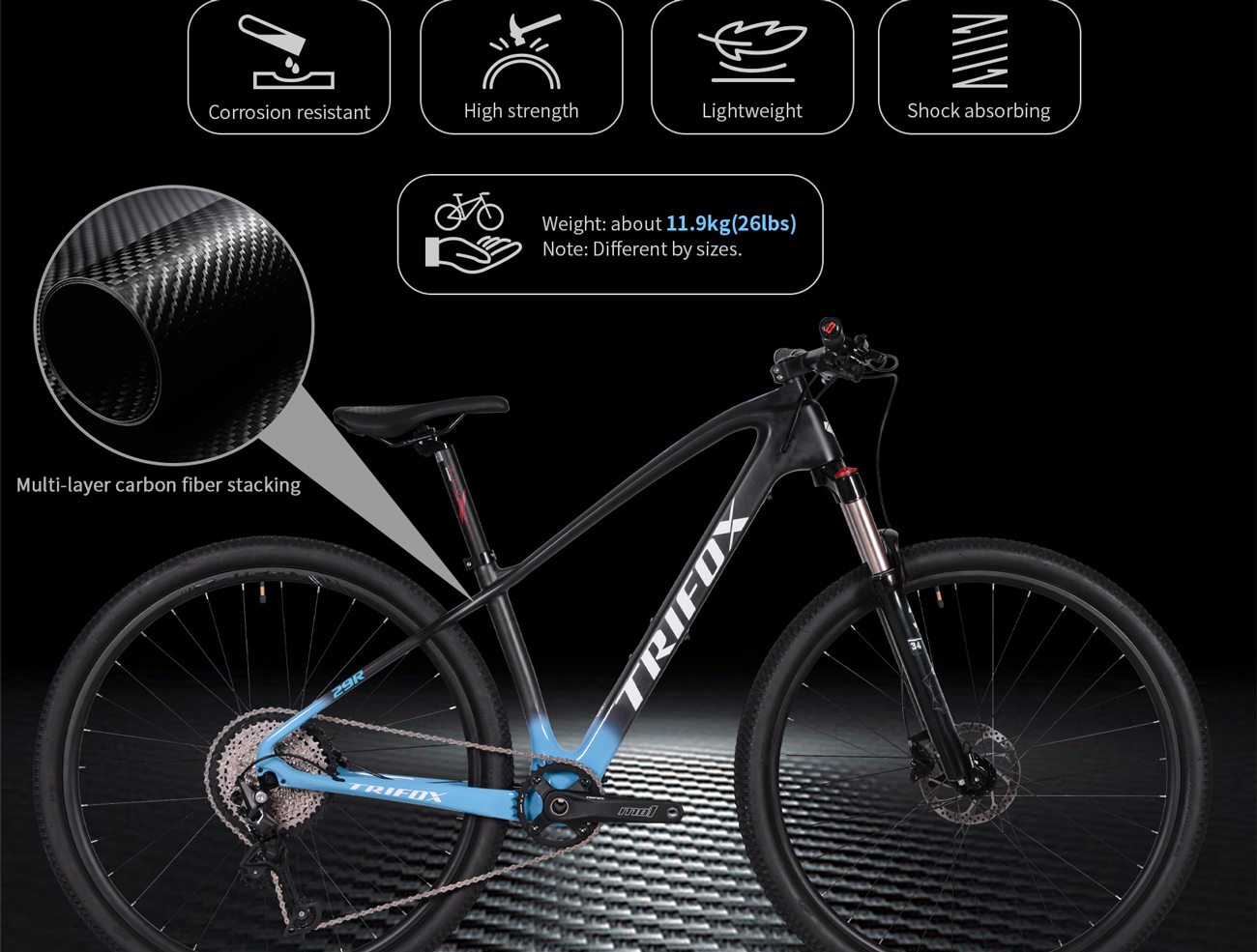
You see "T800 carbon" touted in bike specs, often positioned between "entry-level" T700 and premium "high-modulus" (like T1000+). But what does it actually mean, and is it good?
Here's the breakdown:
1. What "T800" Means: It refers to the tensile modulus of the carbon fiber strands (measured in Gigapascals - GPa). T800 fiber has a higher modulus (stiffer) than T700, but lower than ultra-high-modulus fibers like T1000 or T1100. Higher modulus generally means stiffer and stronger fibers for their weight.
2. The Benefits:
Improved Stiffness-to-Weight Ratio: Compared to T700, T800 allows frame designers to use less material to achieve the same stiffness, or make a frame stiffer at the same weight. This translates to better power transfer and responsiveness.
Good Strength: T800 offers excellent strength, crucial for durability and impact resistance.
Balanced Performance: It hits a sweet spot between the relative affordability/forgiveness of T700 and the extreme stiffness (and often higher cost/brittleness potential) of higher modulus fibers.
3. The Reality Check:
Layup is KING: The raw fiber grade is only part of the story. How the fibers are oriented, woven, layered (the "layup"), and bonded with resin determines the frame's final ride quality, strength, weight, and compliance. A genius layup with T700 can outperform a poor one with T800.
Not All T800 is Equal: Quality control in fiber production and frame manufacturing is paramount. Reputable brands ensure consistency; cheap frames might use "T800" but with questionable processes.
Higher Modulus ≠ Always Better: Ultra-high-modulus fibers (T1000+) can be too stiff, leading to a harsh ride. T800 often provides a better balance of stiffness and some vertical compliance (comfort).
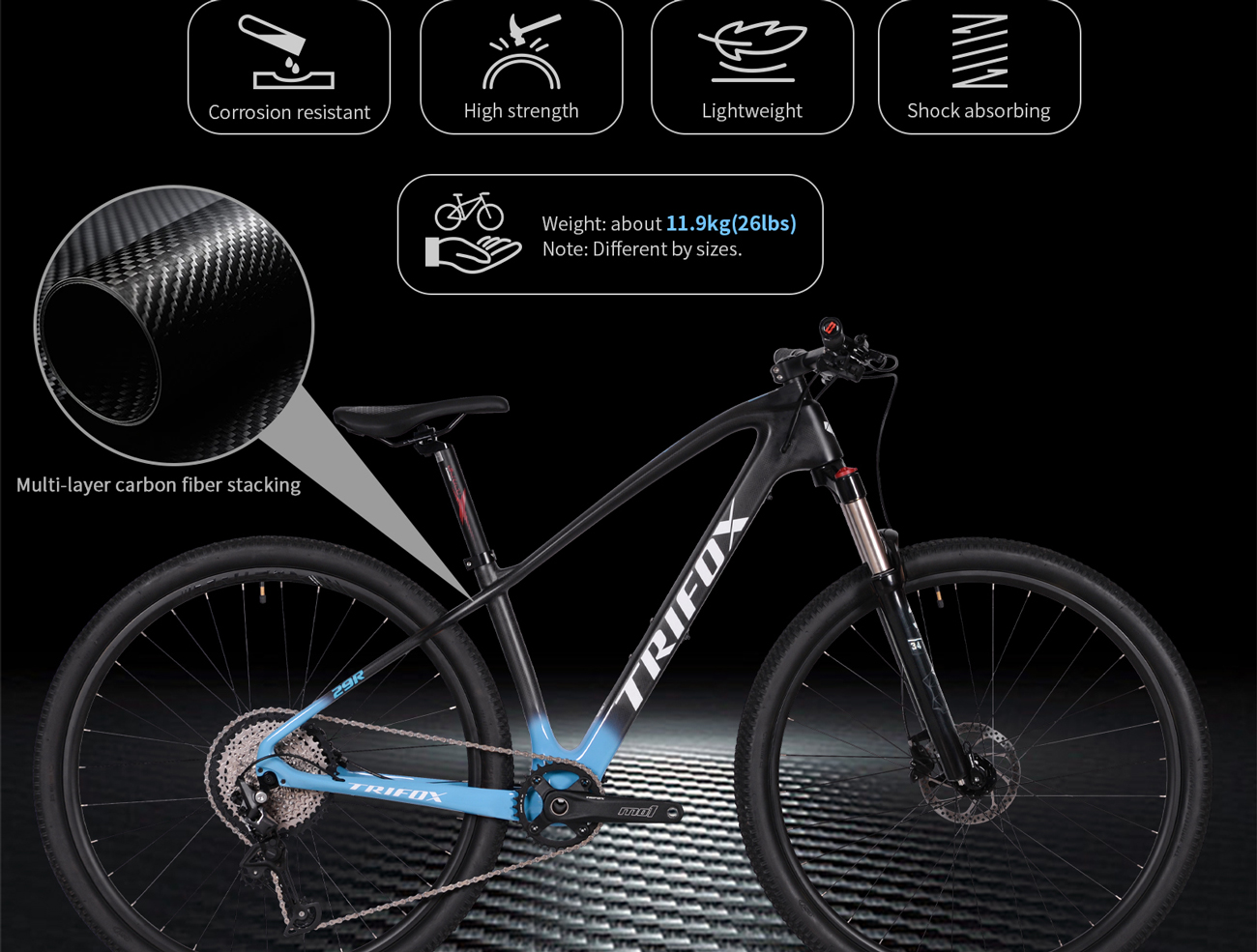
Verdict:
T800 carbon is a very good, high-performance material commonly found in quality mid-range to high-end road, gravel, and MTB frames. It offers a significant step up from basic T700 in terms of stiffness and efficiency without necessarily venturing into the ultra-stiff (and potentially less comfortable or more expensive) realm of top-tier moduli.

Yes, you read that right. $299 for a full Aero Carbon Road Bike Frame. Trifox Bike's X8 model is dropping jaws and potentially barriers to entry for carbon performance. But is this too good to be true? Let's break it down.
What You Get (Specs Matter!):
Material: Toray T800 Carbon Fiber . This is a legitimate, high-modulus grade used by many reputable brands.
Weight: Claimed ~1250g (size M) – impressively light for the price.
Aero Design: Truncated airfoil tube shapes, integrated seatpost clamp, and aero seatpost (included!) aim to cheat the wind.
Compatibility: Designed for rim brakes (V-brakes/cantilevers - crucial point!), standard road groupsets (Shimano 10/11s), and a conventional cockpit. Includes headset, seatpost clamp, and derailleur hanger.
If you dream of a lightweight carbon build but have champagne taste on a beer budget, this is your starting block.
Prioritize weight and aero gains? Don't mind rim brakes? This could be a rocket ship.
Experienced Tinkerers: Comfortable sourcing parts and building a bike? The value proposition is immense.
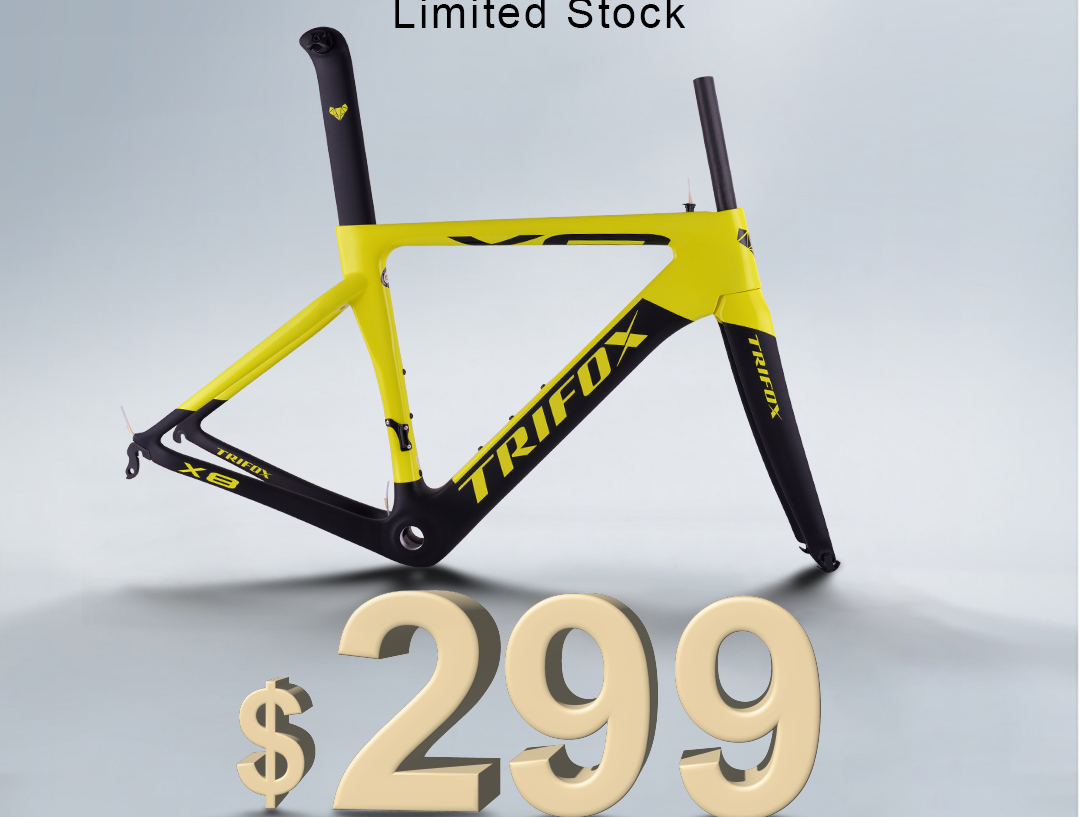
The Trifox X8 frame is a legitimate disruptor. For $299, you get a very light, aero-profiled carbon frame using reputable materials.
Is it worth it? If you understand the limitations, crave a lightweight carbon project, and prioritize raw speed/weight over all-weather braking and cutting-edge standards, this deal is borderline revolutionary. It proves high-performance carbon can be accessible.
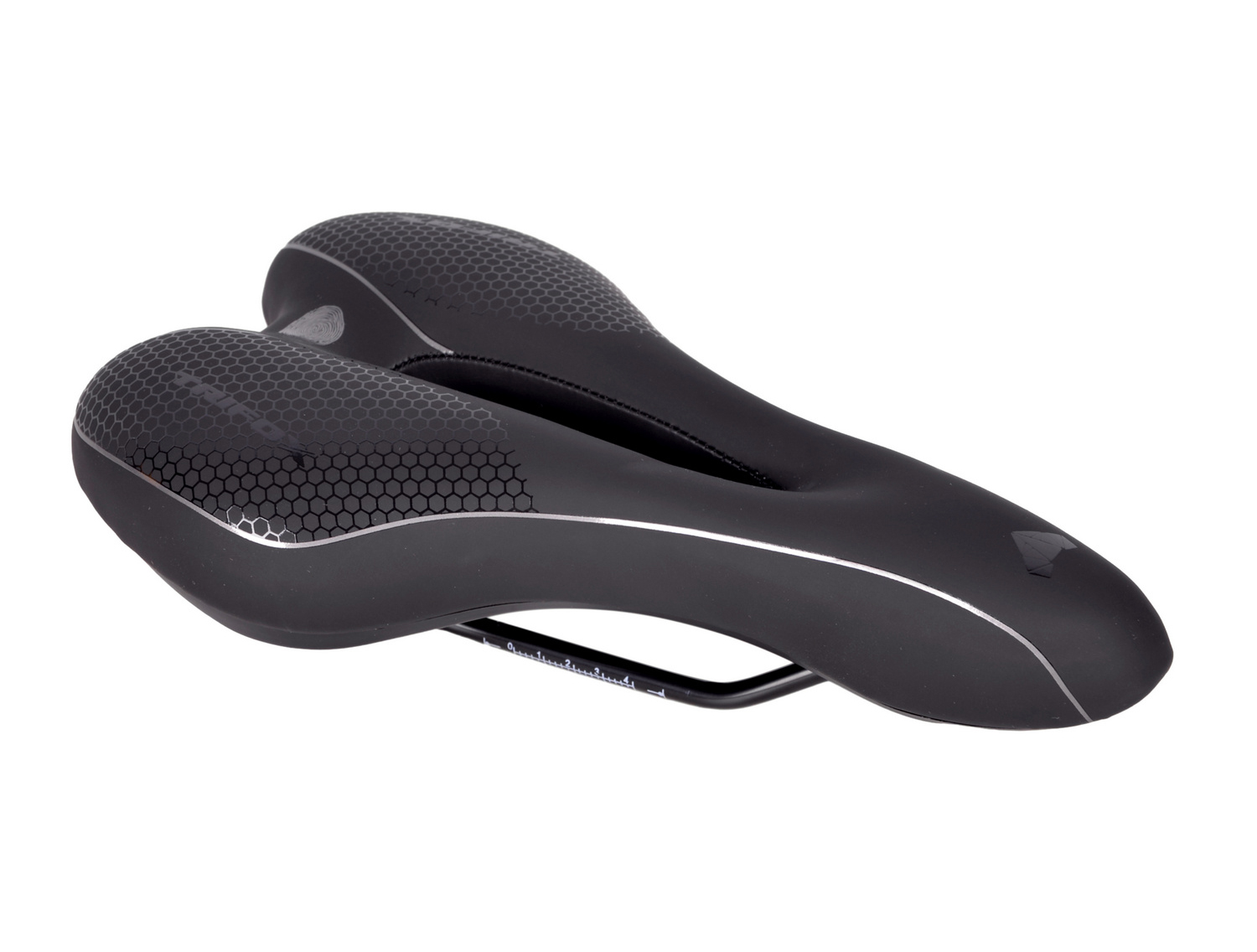
Let's be honest: an uncomfortable saddle can turn the joy of cycling into pure misery. Numbness, chafing, and soreness aren't badges of honor – they're signs you need a better perch! Choosing the right saddle is crucial for pain-free, enjoyable miles. Forget the "toughen up" myth; comfort is king. Here’s how to find yours:
1. Anatomy is Destiny (Especially Gender): Men and women generally have different pelvic bone structures and soft tissue needs. Women's saddles are typically wider at the back with a shorter nose and often a wider central cutout/longer channel. Men's saddles are often narrower. Start by looking at saddles designed for your anatomy. Unisex options exist, but prioritize your specific needs.
2. Riding Position Dictates Shape: How you sit on the bike dramatically impacts pressure points.
Upright (Commuting/Cruising): You sit more squarely on your sit bones ("ischial tuberosities"). Look for a wider, more padded saddle with ample support directly under these bones.
Moderate Lean (Fitness/Gravel): Weight shifts slightly forward. A medium-width saddle with some curvature and moderate padding or a pressure-relief channel is often ideal.
Aggressive Lean (Road Racing/TT): Your pelvis rotates forward, placing more pressure on the soft tissue between your sit bones and pubic arch. Narrower saddles with a distinct curve, minimal padding, and a pronounced channel or cutout are essential to relieve perineal pressure.
3. Measure Your Sit Bones : This is the most important step! Your sit bones need to be properly supported. Many bike shops have simple "assometer" pads you sit on to measure the distance between your sit bones (center-to-center). Add 20-30mm to this measurement – this is generally your ideal saddle width range. Don't guess!
4. Padding: Less is Often More: Thick, soft padding feels great in the shop for 30 seconds, but on a long ride, it compresses, loses support, and can actually cause more chafing and soft tissue pressure. Look for supportive foam or gel strategically placed over the sit bone areas, with firmer bases. Quality materials matter.
5. Pressure Relief is Paramount: Cutouts or elongated channels in the center are designed to reduce pressure on nerves and soft tissue (critical for preventing numbness). If you experience numbness, prioritize saddles with this feature. The size and shape of the relief area vary significantly – try different options.
The Golden Rules:
- Ignore the "Break-In" Myth: A good saddle should feel mostly comfortable on the first few rides. Minor adjustments might happen, but it shouldn't cause significant pain.
- Test Ride is Essential: Reputable shops often have demo saddles or generous return policies. Ride it for at least a few hours over your typical terrain before committing. What feels okay for 10 minutes might be agony at 60.
- Perfect Fit Trumps Brand/Price: The most expensive or popular saddle isn't necessarily your saddle. Focus on the fit fundamentals above.
- Position Matters Too: Ensure your saddle height and fore/aft position are correctly set. Even the perfect saddle won't work if it's poorly positioned.
Finding your perfect saddle takes patience and testing, but the payoff -miles of comfortable, pain-free riding – is absolutely worth the effort. Ditch the discomfort and saddle up for joy!
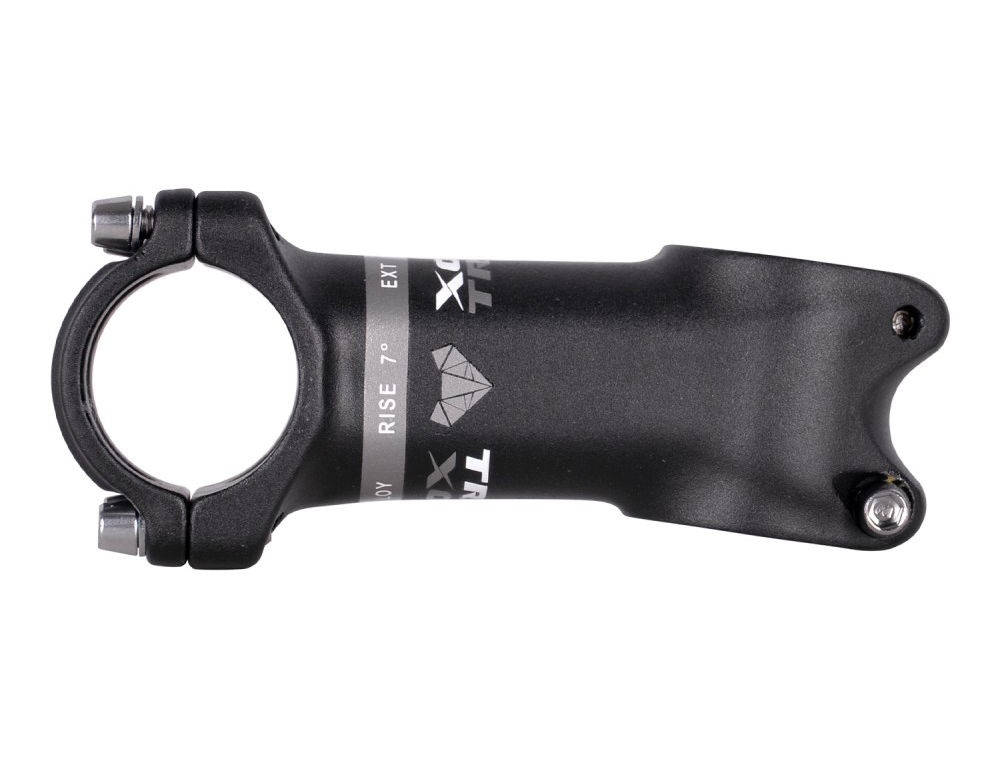
Think your stem is just a boring metal tube connecting your handlebars? Think again! That unassuming component plays a surprisingly pivotal role in your ride's comfort, control, and even efficiency. Yes, your stem makes a significant difference. Here's why:
1. Fit is King: This is the stem's PRIMARY job.
Reach: A stem that's too long forces you to over-stretch, straining your back, shoulders, and neck. Too short, and you're cramped, potentially hurting your knees or feeling twitchy. The right stem length dials in your perfect distance to the bars, promoting a comfortable, powerful, and sustainable position.
Height: A stem's angle (often +/- 6° or 10°) and stack height (via spacers) dramatically impact your handlebar height. A higher stem offers a more upright, relaxed posture (great for comfort, commuting, endurance). A lower stem creates a more aerodynamic, aggressive position (favored for racing or performance). Getting this wrong can lead to numb hands, back pain, or neck strain.
2. Handling & Control:
Stability vs. Agility: Stem length directly influences steering feel. A longer stem provides more stable, slower steering – ideal for descending at speed or loaded touring. A shorter stem makes the steering feel quicker and more responsive, beneficial for tight corners, technical trails (on MTBs), or criterium racing. Changing stem length can subtly (or dramatically) alter how your bike handles.
3. Material Matters (A Bit):
Weight: Stems come in aluminum (most common, affordable, strong), carbon fiber (lighter, can dampen vibration slightly, pricier), and steel/titanium (less common). While weight savings are marginal compared to wheels or frame, every gram counts for some riders.
Stiffness: A stiff stem (often aluminum or high-end carbon) ensures efficient power transfer from your upper body during hard efforts or sprints. Excessively flexy stems feel vague and waste energy. Most modern stems offer sufficient stiffness.
4. The "Performance" Myth (Kinda):
Don't expect swapping stems to suddenly make you significantly faster like aero wheels might. Its performance impact is indirect: enabling an efficient, comfortable position you can hold longer, and providing the right handling for your terrain.
The Crucial Takeaway:
The right stem for YOU makes a massive difference in comfort and control. The wrong stem can make riding miserable or even painful. Changing your stem is one of the most cost-effective ways to dramatically improve bike fit and ride feel.
Before You Swap: Small changes (like 10mm in length or flipping the angle) can have a big effect. If you're experiencing discomfort or handling issues, consult a professional bike fitter. They can determine if a stem change is the solution and recommend the perfect specs for your body and riding style. Don't just guess – get it right and transform your ride!

In an era dominated by plush suspension, choosing a rigid mountain bike seems counterintuitive, even masochistic. But hear us out! Ditching the squish unlocks a unique, rewarding experience that many riders crave. Here’s why rigid is rad:
Pure Connection & Skill Boost: Without suspension masking the trail, you feel everything. Every root, rock, and ripple buzzes through the bars. This forces you to read the terrain ahead, choose smoother lines, and actively use your arms and legs as suspension. It sharpens bike handling skills like nothing else, making you a smoother, more precise rider everywhere.
Simplicity & Reliability: No stanchions to service, no air springs to adjust, no dampers to bleed. Rigid forks and frames are virtually maintenance-free. Fewer moving parts mean fewer things to break, leak, or wear out. Just lube the chain and ride. It’s cycling distilled to its essence.
Weight Savings & Efficiency: Suspension forks add significant weight (often 1.5kg+). Rigid forks are featherweight. This translates directly to a lighter, more nimble bike, especially noticeable when climbing or accelerating. Every pedal stroke feels direct – no energy lost compressing suspension bob.
Cost-Effectiveness: Quality suspension forks are expensive. Rigid forks, especially steel or quality alloy, offer incredible performance per dollar. Building or converting to rigid can save significant cash upfront and long-term on maintenance.
The "Analog" Experience: Riding rigid is raw and visceral. It’s about flow over brute force, finesse over forgiveness. The satisfying buzz of tires on hardpack, the silent glide through the woods – it’s an unfiltered conversation with the trail. Many find it incredibly engaging and fun.
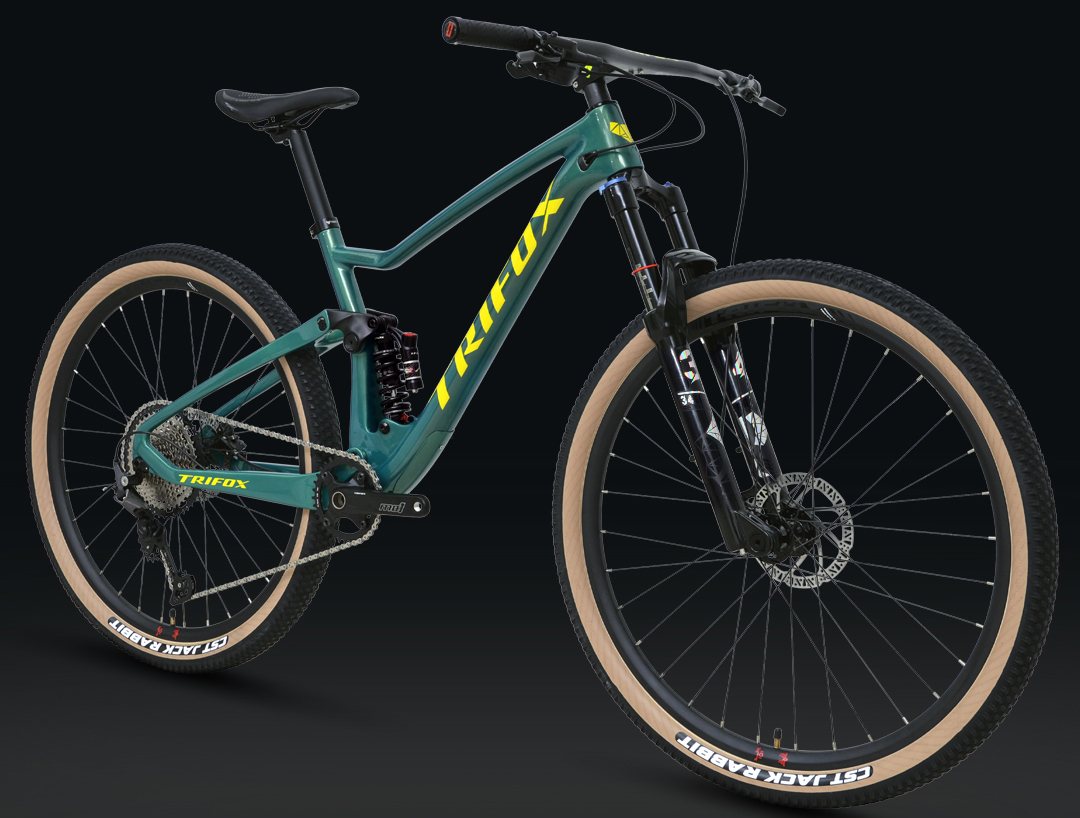
Is it for everyone? Honestly, no. Choppy, high-speed chunk will beat you up. But for flowing singletrack, gravel adventures, bikepacking, commuting, or simply honing your skills, rigid excels.
Ready to simplify? Check out lightweight, durable rigid forks at Trifox Bike. Rediscover the trail. Ride rigid!
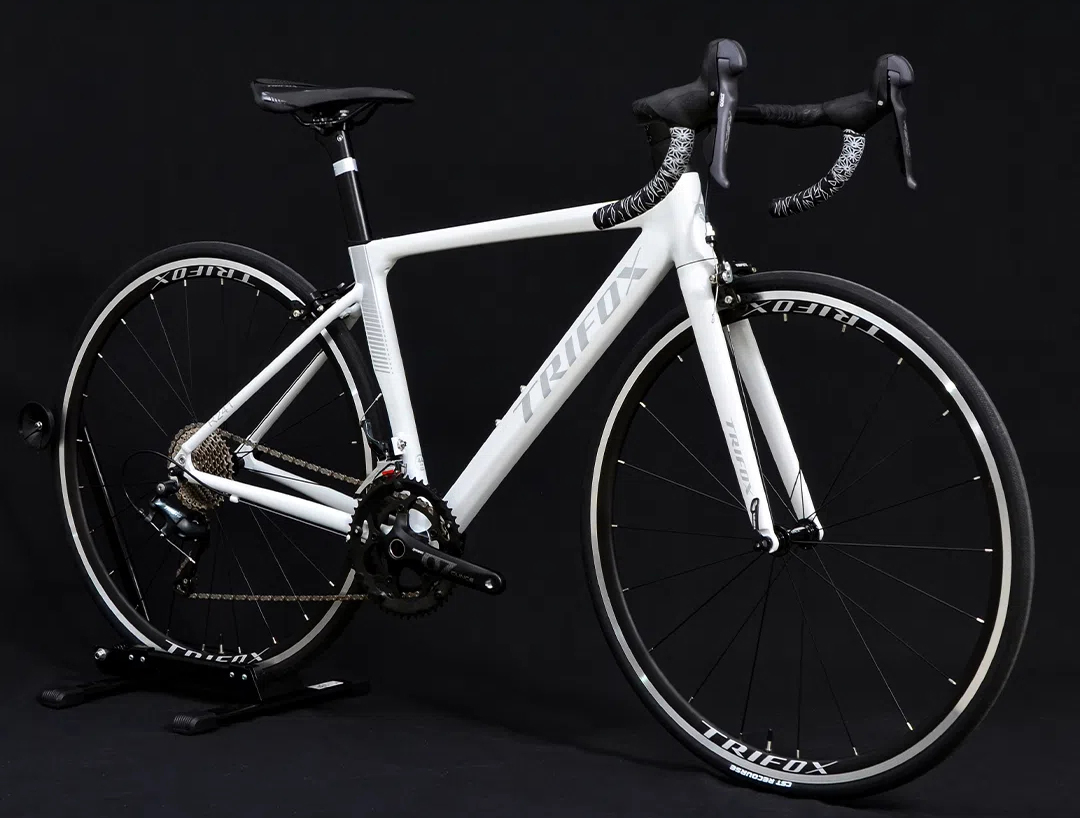
Close your eyes. Remember that first bike? Mine wasn't sleek or light. It was a clunker, a hand-me-down beast probably older than I was. Heavy steel frame, faded red paint chipped to reveal battleship grey primer underneath. Coaster brakes that screeched like a banshee if you dared pedal backwards too hard.
It had fat, knobby tires better suited for mud than pavement, and handlebars wide enough to feel like steering a bus. The seat? A vinyl-covered brick promising maximum discomfort after five minutes. It creaked, it rattled, and the chain guard was perpetually bent.
But oh, the magic. That first terrifying push off without training wheels – pure, unadulterated terror mixed with exhilarating freedom! The wobble felt catastrophic, the ground impossibly far away. Scraped knees? Guaranteed. Gravel embedded in palms? A rite of passage.
It wasn't about speed or style. It was about boundaries dissolving. Suddenly, the corner store wasn't a parental escort away. Friends' houses became independent destinations. The park felt like my kingdom. That heavy beast represented pure, unlicensed adventure. The smell of hot rubber and dusty chains, the wind (sort of) in my hair, the sheer joy of rolling downhill... it was my first taste of true autonomy. That clunky, imperfect machine wasn't just a bike; it was my first passport to freedom, grease stains and all.
What did yours look like? Maybe get your first bike at trifoxbike. Share the memory!


























































